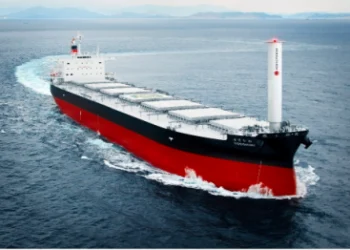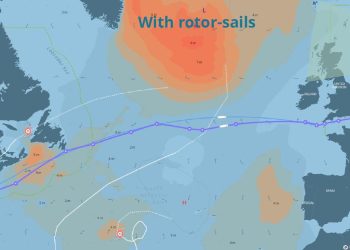NAPA Steel and NAPA Designer get updated


NAPA announced the release of new tools and interfaces with class society software to streamline ship design compliance with Common Structural Rules for Bulk Carriers and Oil Tankers (CSR BC&OT; formerly known as “harmonised CSR”) from the International Association of Classification Societies (IACS).
Updates to 3D structural design software, NAPA Steel, and the release of state-of-the-art geometry modelling tool, NAPA Designer, will deliver an intuitive shift from 2D to 3D design requirements. This will eliminate duplication between software systems and reduce the man-hours needed to meet the new rules.
From July 1st, compliance with CSR BC&OT, which unifies and expands existing IACS rules for tankers over 150m in length and bulk carriers over 90m in length, becomes a mandatory step in the design process. In addition to fulfilling the requirements, ship designers are also facing the challenge of class societies having developed their own independent rule check software. With NAPA’s new modified interfaces with class society software, including Bureau Veritas’ MARS2000, ClassNK’s PrimeShip-HULL, DNV GL’s POSEIDON and Nauticus Hull, and Lloyd’s Register’s RulesCalc, the design information can be integrated automatically, significantly speeding up the process by removing duplicated work.
NAPA’s new geometry modelling tool, NAPA Designer, offers an intuitive, interactive 3D modelling interface for ship designers, requiring only little training to adapt to from a conventional 2D approach. Developed in co-operation with Tekes, the Finnish Funding Agency for Innovation, and Idean, a global design agency specialising in superior user experience, NAPA Designer delivers a significantly improved design platform for new and existing users alike. This allows the users to meet CSR BC&OT and the other day-to-day challenges of ship design with easy-to-use, interactive 3D modelling.
In line with the CSR BC&OT, vessel designs must also meet additional strength requirements for aft-ship and fore-ship for FE analysis, in addition to the existing mid-ship strength requirements. To enable the assessment of these criteria quickly and easily, integrations have been established between the NAPA Steel 3D product model and major class society rule check software. Cross-section geometry and initial scantlings, as well as compartment information can be exported to these rule check systems with up to date FE mesh for global, local and fine mesh analyses. Results that fulfil CSR BC&OT requirements can be imported directly back to the 3D product model.
The updates to NAPA Designer and NAPA Steel are both already in use at a number of major shipyards, including Sanoyas Shipbuilding Corporation, and delivering positive results for NAPA customers.
Kazuhisa Yagi, Manager, Hull Structure Design, Sanoyas Shipbuilding Corporation commented:
“NAPA Steel and ClassNK’s PrimeShip-HULL play essential roles to support our design process. We have utilised the interface between NAPA Steel and PrimeShip-HULL for current Common Structural Rules and achieved great time-savings. It is so good to hear that the scope of the interface between NAPA Steel and PrimeShip-HULL is expanding to cover transverse members, which enables us to save even more time for the CSR BC&OT rule check. With a combination of these two software systems, we can minimise all time consuming work and designers can focus more on value added design work to differentiate our product. We will surely use these for real ship projects when the new CSR BC&OT comes into effect.“
Tapio Hulkkonen, NAPA Steel Product Manager, NAPA commented:
“We have enhanced our offering to provide seamless support for CSR BC&OT rule checking with class societies that will allow designers and yards to deliver safer vessels more productively. This will be achieved through powerful design tools, valuable strength data and reducing the man-hours needed for tasks. For NAPA Designer, we have put in extensive, systematic research, and engaged over 200 NAPA customers from 22 different countries to give their valuable input. Thanks to this extensive research work combined with 25 years’ experience in ship design software development we can now deliver a best-in-class solution, allowing design teams to meet the challenges of the future with confidence. NAPA’s software is already in use at shipyards building 95% of the world’s fleet, and we believe that it’s our dedication to meeting customer needs and commitment to continuously enhancing the user experience that makes our design software so popular.“
Source and Image Credit: NAPA



























































